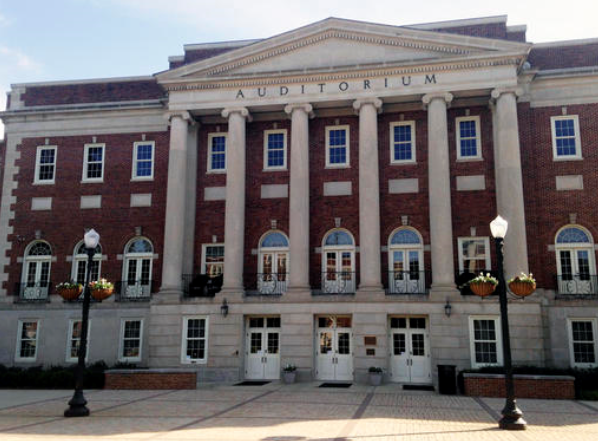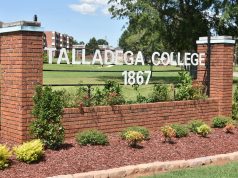
By Russell Contreras
Associated Press

Alabama, once known for discrimination and violence, is one of several states making strides to preserve historic sites. Advocates say it’s time that more states and local communities work to draw attention to the sites before they are lost forever to memory and time.
U.S. Rep. Terri Sewell along with Birmingham Mayor William Bell have been in the forefront of calling on President Obama to use the power of the Antiquities Act to create a Civil Rights National Historical Park that tells the story of a critical chapter in the fight for equality. The peaceful protests in Birmingham broke the back of segregation and led to the passage of the Civil Rights Act of 1964.
Last week, Sewell and Bell were joined in Washington D.C. by Myrna Jackson, Civil Rights icon and activist who spoke of her work during the April demonstrations in 1963, for which she was arrested twice and held in the Birmingham Jail.
Carolyn McKinstry, a survivor of the 16th Street Baptist Church bombing in Birmingham that took the lives of the four little girls, her young friends, spoke as well as Paulette Roby, veteran of the children’s marches in Birmingham.
Legislation was introduced in March of this year by Congresswoman Sewell, but the hope is for the action to be signed into existence by the president.
“The establishment of a national park that honors Birmingham’s place in the history of the Civil Rights Movement will give us space to reflect on the many challenges we still face today. The relevance of the events in Birmingham during the 1960s still speaks to every African American today as we wrestle with the issues of equality, economic empowerment and social justice,” said Bell.
Elsewhere in Alabama, tourism officials invite visitors to experience such places as the University of Alabama’s Foster Auditorium, where Gov. George Wallace stood at the entrance to prevent two black students from entering. The students were later allowed to enroll after President Kennedy placed the Alabama National Guide under federal control.
Demographic shift
Those efforts come amid a demographic shift that indicates the U.S. population will be majority-minority by mid-century, highlighting a need to cover all history.
A once-thriving all-black settlement in the New Mexico desert is a ghost town that rarely appears on maps. Tour buses pass but never stop at a Houston building where Latino activists planned civil rights events. Motels that welcomed minority motorists along 1950s Route 66 sit abandoned.
From a Civil War battlefield where Hispanic Union soldiers fought to birthplaces of civil rights leaders, sites linked to the nation’s struggle for racial equality are overlooked, neglected and absent from travel guides.
“I think generally we need to be more inclusive,” said Rita Powdrell, president of the African American Museum & Cultural Center of New Mexico. “There are a lot of sites that should be recognized and remembered because they tell our story.”
In Albuquerque, there are no detectable markers for black civil rights advocate and 1950 Nobel Peace Prize Ralph Bunche, who attended school in the city. There also are no historic makers for David C. Marcus, an Albuquerque High School graduate who represented Latinos in landmark desegregation cases in California, including Mendez v. Westminster that challenged Orange County’s segregated school system.
Though funds are limited, efforts are underway to save some sites.
In Houston, a nonprofit recently formed to restore a building that served as a meeting place for Latino civil rights groups during the 1950s, said Ray Valdez, president of the League of United Latin American Citizens’ LULAC Council 60.
It was there that Gus Garcia and other legendary lawyers met to map out desegregation cases, and John J. Herrera planned the historic meeting with President John F. Kennedy the night before his assassination.
“Previous LULAC leaders left it in bad shape,” Valdez said. “They hadn’t paid property taxes on it for several years. They hadn’t kept maintenance on it for several years.”
The nonprofit hopes to use the building as a community center and museum on Mexican-American history, Valdez said.
Tourist attractions
Not all states and cities are letting time bury memories of their civil rights sites.
In Oakland, California, there are markers around the city to highlight locations connected to the Black Panther Party of the late 1960s.
And also in Albuquerque, city officials are working on a revitalization plan for the De Anza Motor Lodge. The empty and fenced off building was one of the motels that offered lodging to black and Hispanic travelers along the famed Route 66 from Chicago to Los Angeles during segregation.
New Mexico’s Tourism Department also promotes the state’s Hispanic and Native American heritage, encouraging visitors to take a trip to Taos Pueblo or Santa Fe Plaza. But little is done to promote Blackdom, the all-black frontier ghost town that some advocates say could be turned into a tourism attraction.
The state also doesn’t have a marker in the northern New Mexico ghost town of Dawson, the birthplace of United Farm Workers co-founder Dolores Huerta. Recently, the Albuquerque Public Schools named a school after pioneer Latino scholar George I. Sanchez, who was born in the city.
New Mexico Office of African American Affairs executive director Yvette Kaufman-Bell said it will take a community effort to bring attention to these sites, including creating simple informative, tourist brochures. “It’s up to us to tell our own history,” she said.
___
Follow Russell Contreras on Twitter at http://twitter.com/russcontreras. His work can be found at http://bigstory.ap.org/content/russell-contreras




